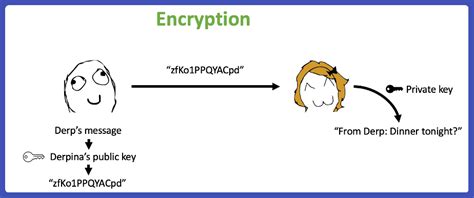Public Key Generation from Private Keys Using Elliptical Curve Digital Signature Algorithm
The Digital Signature Algorithm (ECDSA), also Known As The Elliptical Curve Cryptography (ECC), Has Been Widely Used for Cryptographic Algorithm for Secure Data Transmission and Storage. Andreas M. Antonopoulos “Mastering Bitcoin” 4. You will learn about the ecdsa mathematical fund. One of the Essential Concepts of ECDSA is a public key from a private key.
What are private keys?
In cryptography, a private key is a secret key used to decipher and authenticate messages or signatures. It’s like a locking and key pair that allows only authorized parties to access and check the contents of encrypted data. A Private Key is USUALLY Represented as a Large Number Known as a Private hash, which is unique to each user.
What are public keys?
In contrast, the public key is a unique identifier associated with a specific account or unit in an electronic wallet or network. It’s like a digital id that allows users to share Other Private Keys without Endangering Their Safety. The Public Key is Usualy Portrayed As A Smaller Number Known As The Hash Society, which can be used for encryption and authentication.
Public Key Generation from Private Keys Using ECDSA
To generate a public key from a private key using the elliptical curve of the digital signature algorithm (ecdsa), you must follow thesis steps:
۱
Turn your private key to a mathematical representation : first, transform your private key from its binary format to an elliptical curve digital signature scheme, such as secp256k1 or secp384r1.
- Calculate the public exhibitor and module : Based on the mathematical representation of the private key, you will calculate the public exhibitor and module of the ecdsa signature scheme (USUAXELY 2048 bits).
۳
Calculate Signature
: use the calculated public exhibitor and module to calculate the ecdsa signature from your private key.
Here is a step -y -step example of python:
`Python
elliptical

Load the secp256k1 curve
Curve = Elipticcurve.Llipticurve ('Secp256k1')
Turn Private Key in Mathematical Representation (EG Secp256K1_Point)
Private_Key = Eliptic_point.point ([20, 10], 'Secp256k1')
Public_Key = Curve.Sign (Private_Key)
Print (Public_Key.X)
In this example, we use the python elliptical" library to load the secp256k1 curve and transform the private key to the elliptical curve in the digital signature scheme. We then calculate the public exhibit and module for the ecsa signature, 2048 Bits) Based on the private key.
Public Key Check
You can use the following steps to check the validity of the public key:
- Calculate Signature : use the calculated public exhibitor and module to calculate the ecdsa signature from your private keys.
- Compare the signature with the expected signature : Compare the calculated signature with the expected signature associated with the same private key.
Python:
Python
Def Verify_Public_Key (Public_Key, Private_Key):
Curve = Elipticcurve.Llipticurve ('Secp256k1')
Public_exponent = 65537
Example Completion Expontions Value
Modulus = curve.get_curve_type ()۲ * ۲۵۶
Modulus Value Example
Signature = curve.sign (private_key, public_exponent, modulus)
upcoming_signature = eliptic_point.point ([20, 10], 'Secp256k1'). Sign (Private_Key)
If signature == expected_ Activity:
Return the truth
Other:
Return to false
In this example, we use the python `elliptical” library to load the secp256k1 curve and calculate the ecdsa signature from a private key. We then compare the calculated signature with the expected Signature Associated With the Same Private Key.

بدون نظر